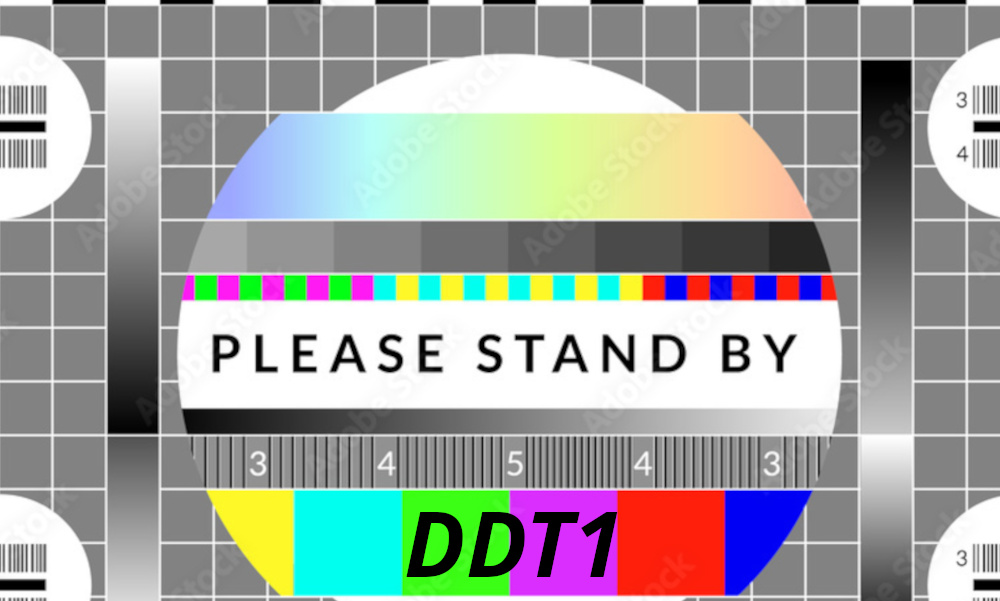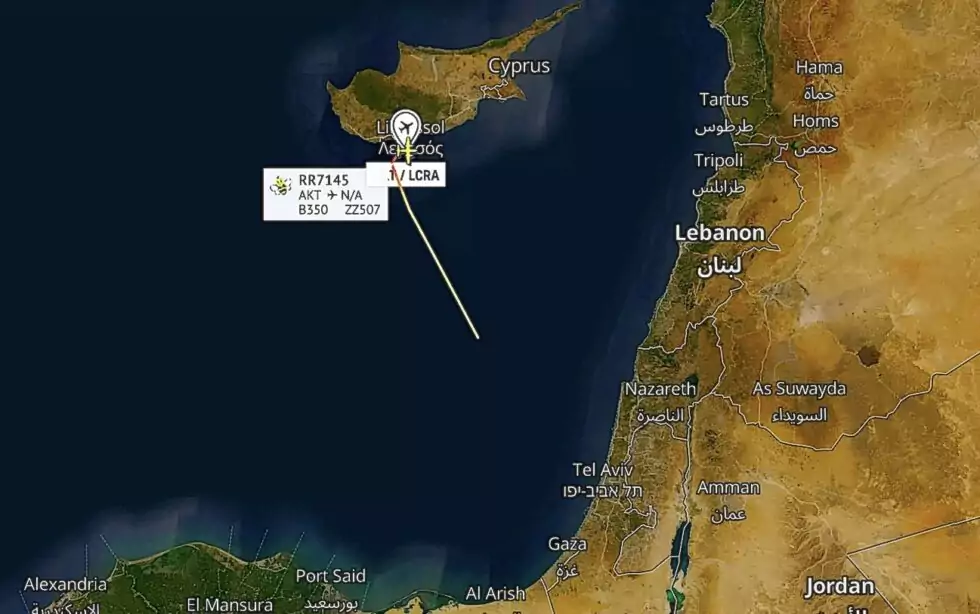Restricted service

Apologies, restricted service atm because I’m ill. Hopefully, it’s not serious but it is making me very tired. Best wishes loyal readers.
Media Scorn Gaza Protesters for Recognizing Corporate Reporters Aren’t Their Friends
Original article by ARI PAUL republished from FAIR under a Creative Commons licence.

An emerging complaint the corporate media have against the nationwide—and now international—peace encampments is that many student protesters won’t speak to them. The problem, pundits and reporters say, is that these encampments have designated media spokespeople, and other protesters often keep their mouths shut to the press.

Conservative pundit Peggy Noonan (Wall Street Journal, 5/2/24) said of her trip to the Columbia University encampment:
I was at Columbia hours before the police came in and liberated Hamilton Hall from its occupiers. Unlike protesters of the past, who were usually eager to share with others what they thought and why, these demonstrators would generally not speak or make eye contact with members of the press, or, as they say, “corporate media.”
I was on a bench taking notes as a group of young women, all in sunglasses, masks and kaffiyehs, walked by. “Friends, please come say hello and tell me what you think,” I called. They marched past, not making eye contact, save one, a beautiful girl of about 20. “I’m not trained,” she said. Which is what they’re instructed to say to corporate-media representatives who will twist your words. “I’m barely trained, you’re safe,” I called, and she laughed and half-halted. But her friends gave her a look and she conformed.
Peter Baker (Twitter, 5/4/24), the chief White House correspondent for the New York Times, supportively amplified the former Ronald Reagan speechwriter’s claim, saying the protests are “not about actually explaining your cause or trying to engage journalists who are there to listen.”
A reporter for KTLA (4/29/24) complained that his news team was not granted access to the encampment at UCLA, and Fox News (4/30/24) had a similar complaint about the New York University protest:
Fox News Digital was told that the outlet was not allowed inside, and only student press could access the gated lawn. A local ABC team and several independent reporters were also denied. However, Fox News Digital witnessed a documentary crew and a reporter from Al Jazeera reporting inside the area.
One has to wonder: What could make activists suspect that the network that produced “Anti-Israel Agitators: Signs of ‘Foreign Assistance’ Emerge in Columbia, NYU Unrest” (4/26/24), “Pressure Builds for Colleges to Close or Shut Down Anti-Israel Encampments Amid Death Threats Toward Jews” (4/26/24) and “Ivy League Anti-Israel Agitators’ Protests Spiral Into ‘Actual Terror Organization,’ Professor Warns” (4/21/24) wouldn’t give them a fair shake?
Organized structure

What is clear is that the student protesters across the country have organized a structure where many participants who are approached by media defer to appointed media liaisons (Daily Bruin, 4/27/24; KSBW, 5/3/24; Daily Freeman, 5/4/24; WCOS, 5/4/24).
For Baker and Noonan, this is evidence that the protests are at best not serious, and at worst not democratic. Indeed, corporate media, at every turn, have attempted to sully calls to halt a genocide as some kind of perverted anti-democratic extremism (Atlantic, 4/22/24; New York Times, 4/23/24, 5/2/24; Washington Post, 5/6/24, 5/6/24; Free Press, 5/6/24).
But why would such a communications structure even be considered unusual? Most organizations that corporate journalists cover have dedicated spokespeople to handle media inquiries, while others stay silent. Noonan’s experience is no different than how many street reporters interact with the cops; ask a cop for a comment and you’ll get sent over to the public information officer. You’ll rarely if ever see a news story that complains or even notes that a government or corporate employee directed a reporter to talk to the press office.
It’s true that in the worlds of business and bureaucracy, restrictions on employee speech can hamper investigative reporting (FAIR.org, 2/23/24). But the media discipline at these encampments seems more like a way to keep the message clear. Vox-pop free-for-alls at these encampments could make it harder for news consumers to figure out what the protests are about; the demands and the aims of the movement might be muddled if every participant sounded off into the nearest reporter’s microphone.
With the current media strategy, Baker and Noonan really don’t have to wonder what the messages are: The encampments want their campuses to divest from Israel, and now students are protesting their administrations and the police violence against free speech and assembly. They are not entitled to the time of every individual protester.
It’s also all too easy for corporate reporters or right-wing commentators to find one loose cannon at a protest who can be prompted to go off-message during an interview, giving media outlets the ability to paint protesters generally as unhinged and ignorant. The fact that the Gaza encampment protesters have such a structure in place is a sign of political maturity, because they have found a way to keep the message simple and unified.
“The college kids are showing a precocious message discipline to reporters hostile to the substance of their protest,” Chase Madar, a New York University adjunct instructor, told FAIR.
Insinuating illiberalism
Baker and Noonan don’t express alarm that student reporters covering the protests have been subjected to extreme violence by the police (CNN, 5/2/24, 5/2/24), a very real form of state censorship. Nevertheless, Noonan and Baker insinuate that an aversion to speak to the corporate press signifies the movement’s illiberalism.
Perhaps establishment media are a little bitter that student reporters at places like Columbia University’s WKCR are doing a better job of covering the unrest than some salaried professionals in the media class (AP, 5/3/24; Washington Post, 5/4/24; Axios, 5/4/24).
If anything, what Baker and Noonan are lamenting is that the discipline of the students is making it harder for corporate media to misrepresent, ridicule and embarrass students who are protesting the US-backed genocide of Palestinians in Gaza. They’re telling on themselves.
Featured image: Fox News depiction (4/30/24) of the Columbia University encampment it complained it had been shut out of.
Original article by ARI PAUL republished from FAIR under a Creative Commons licence.
REVEALED: UK MILITARY HAS FLOWN 200 SPY MISSIONS OVER GAZA IN SUPPORT OF ISRAEL
British spy planes have recorded up to 1,000 hours of footage over Gaza, including from the day Israel assassinated three UK aid workers.

- UK government refuses to give details of spy flights but Declassified independently obtains information
- British spy plane landed at Israel’s major air force base, Nevatim, in February
- UK’s Shadow R1 spy plane can supply intelligence for ‘target acquisition’
- ICC could investigate British ministers over complicity in war crimes
The Royal Air Force (RAF) has flown 200 surveillance flights over Gaza since December, it can be revealed.
The UK government refused to give any details about the flights which began on December 3 but Declassified has independently constructed a timeline.
The extraordinary number of missions over the past five months works out at well over a flight per day and continues as Israel invades the supposedly “safe” southern city of Rafah.
March saw the highest number of British spy flights over Gaza with 44 missions.
The new information comes amid speculation that the International Criminal Court (ICC) is set to issue arrest warrants for Benjamin Netanyahu and his ministers. British officials could also face prosecution for complicity in war crimes, including defence secretary Grant Shapps.
All the British spy flights have taken off from RAF Akrotiri, the UK’s sprawling air base on Cyprus, and have been in the air for around six hours.
…

…
As Peace Protests Are Violently Suppressed, CNN Paints Them as Hate Rallies
Original article by JULIE HOLLAR republished from FAIR under a Creative Commons Attribution-NonCommercial-NoDerivs 3.0 Unported License.

As peace activists occupied common spaces on campuses across the country, some in corporate media very clearly took sides, portraying student protesters as violent, hateful and/or stupid. CNN offered some of the most striking of these characterizations.

Dana Bash (Inside Politics, 5/1/24) stared gravely into the camera and launched into a segment on “destruction, violence and hate on college campuses across the country.” Her voice dripping with hostility toward the protests, she reported:
Many of these protests started peacefully with legitimate questions about the war, but in many cases, they lost the plot. They’re calling for a ceasefire. Well, there was a ceasefire on October 6, the day before Hamas terrorists brutally murdered more than a thousand people inside Israel and took hundreds more as hostages. This hour, I’ll speak to an American Israeli family whose son is still held captive by Hamas since that horrifying day, that brought us to this moment. You don’t hear the pro-Palestinian protesters talking about that. We will.
By Bash’s logic, once a ceasefire is broken, no one can ever call for it to be reinstated—even as the death toll in Gaza nears 35,000. But her claim that there was a ceasefire until Hamas broke it on October 7 is little more than Israeli propaganda: Hundreds of Palestinians were killed by Israeli forces and settlers in the year preceding October 7 (FAIR.org, 7/6/23).
‘Hearkening back to 1930s Europe’

Bash continued:
Now protesting the way the Israeli government, the Israeli prime minister, is prosecuting the retaliatory war against Hamas is one thing. Making Jewish students feel unsafe at their own schools is unacceptable, and it is happening way too much right now.
As evidence of this lack of safety, Bash pointed to UCLA student Eli Tsives, who posted a video of himself confronting motionless antiwar protesters physically standing in his way on campus. “This is our school, and they’re not letting me walk in,” he claims in the clip. Bash ominously described this as “hearkening back to the 1930s in Europe.”
Bash was presumably referring to the rise of the Nazis and their increasing restrictions on Jews prior to World War II. But while Tsives’ clip suggests protesters are keeping him off UCLA campus, they’re in fact blocking him from their encampment—where many Jewish students were present. (Jewish Voice for Peace is one of its lead groups.)
So it’s clearly not Tsives’ Jewishness that the protesters object to. But Tsives was not just any Jewish student; a UCLA drama student and former intern at the pro-Israel group Stand With Us, he had been a visible face of the counter-protests, repeatedly posting videos of himself confronting peaceful antiwar protesters. He has shown up to the encampment wearing a holster of pepper spray.
One earlier video he made showing himself being denied entry to the encampment included text on screen claiming misleadingly that protestors objected to his Jewishness: “They prevented us, Jewish students, from entering public land!” (“You can kiss your jobs goodbye, this is going to go viral on social media,” he tells the protesters.) He also proudly posted his multiple interviews on Fox News, which was as eager as Bash to help him promote his false narrative of antisemitism.
‘Attacking each other’

UCLA protesters had good reason to keep counter-protesters out of their encampment, as those counter-protesters had become increasingly hostile (Forward, 5/1/24; New York Times, 4/30/24). This aggression culminated in a violent attack on the encampment on April 30 (Daily Bruin, 5/1/24).
Late that night, a pro-Israel mob of at least 200 tried to storm the student encampment, punching, kicking, throwing bricks and other objects, spraying pepper spray and mace, trying to tear down plywood barricades and launching fireworks into the crowd. As many as 25 injuries have been reported, including four student journalists for the university newspaper who were assaulted by goons as they attempted to leave the scene (Forward, 5/2/24; Democracy Now!, 5/2/24).
Campus security stood by as the attacks went on; when the university finally called in police support, the officers who arrived waited over an hour to intervene (LA Times, 5/1/24).
(The police were less reticent in clearing out the encampment a day later at UCLA’s request. Reporters on the scene described police in riot gear firing rubber bullets at close range and “several instances of protesters being injured”—LA Times, 5/3/24.)
The mob attacks at UCLA, along with police use of force at that campus and elsewhere, clearly represent the most “destruction, violence and hate” at the encampments, which have been overwhelmingly peaceful. But Bash’s description of the UCLA violence rewrote the narrative to fit her own agenda: “Pro-Israel and pro-Palestinian groups were attacking each other, hurling all kinds of objects, a wood pallet, fireworks, parking cones, even a scooter.”
When CNN correspondent Stephanie Elam reported, later in the same segment, that the UCLA violence came from counter-protesters, Bash’s response was not to correct her own earlier misrepresentation, but to disparage antiwar protesters: Bash commended the Jewish Federation of Los Angeles for saying the violence does not represent the Jewish community, and snidely commented: “Be nice to see that on all sides of this.”

‘Violence erupted’
Bash wasn’t the only one at CNN framing antiwar protesters as the violent ones, against all evidence. Correspondent Camila Bernal (5/2/24) reported on the UCLA encampment:
The mostly peaceful encampment was set up a week ago, but violence erupted during counter protest on Sunday, and even more tense moments overnight Tuesday, leaving at least 15 injured. Last night, protesters attempted to stand their ground, linking arms, using flashlights on officers’ faces, shouting and even throwing items at officers. But despite what CHP described as a dangerous operation, an almost one-to-one ratio officers to protesters gave authorities the upper hand.
Who was injured? Who was violent? Bernal left that to viewers’ imagination. She did mention that officers used “what appeared to be rubber bullets,” but the only participant given camera time was a police officer accusing antiwar students of throwing things at police.
Earlier CNN reporting (5/1/24) from UCLA referred to “dueling protests between pro-Palestinian demonstrators and those supporting Jewish students.” It’s a false dichotomy, as many of the antiwar protesters are themselves Jewish, and eyewitness reports suggested that many in the mob were not students and not representative of the Jewish community (Times of Israel, 5/2/24).
CNN likewise highlighted the law and order perspective after Columbia’s president called in the NYPD to respond to the student takeover of Hamilton Hall. CNN Newsroom (5/1/24) brought on a retired FBI agent to analyze the police operation. His praise was unsurprising:
It was impressive. It was surprisingly smooth…. The beauty of America is that we can say things, we can protest, we can do this publicly, even when it’s offensive language. But you can’t trespass and keep people from being able to go to class and going to their graduations. We draw a line between that and, you know, civil control.
CNN host Jake Tapper (4/29/24) criticized the Columbia president’s approach to the protests—for being too lenient: “I mean, a college president’s not a diplomat. A college president’s an authoritarian, really.” (More than a week earlier, president Minouche Shafik had had more than a hundred students arrested for camping overnight on a lawn—FAIR.org, 4/19/24.)
‘Taking room from my show’
**** MISSING IMAGE (difficult for WordPress to copy) **** captioned “The majority of news since the war began…has been skewed by a systemic and institutional bias within the network toward Israel,” a CNN staffer told the Guardian (2/4/24).
Tapper did little to hide his utter contempt for the protesters. He complained:
This is taking room from my show that I would normally be spending covering what is going on in Gaza, or what is going on with the International Criminal Court, talking about maybe bringing charges. We were talking about the ceasefire deal. I mean, this—so I don’t know that the protesters, just from a media perspective, are accomplishing what they want to accomplish, because I’m actually covering the issue and the pain of the Palestinians and the pain of the Israelis—not that they’re protesting for that—less because of this.
It’s Tapper and CNN, of course, who decide what stories are most important and deserve coverage—not campus protesters. Some might say that that a break from CNN‘s regular coverage the Israel’s assault on Gaza would not altogether be a bad thing, as CNN staffers have complained of “regurgitation of Israeli propaganda and the censoring of Palestinian perspectives in the network’s coverage of the war in Gaza” (Guardian, 2/4/24)
The next day, Tapper’s framing of the protests made clear whose grievances he thought were the most worthy (4/30/24): “CNN continues to following the breaking news on college campuses where anti-Israel protests have disrupted academic life and learning across the United States.”
Original article by JULIE HOLLAR republished from FAIR under a Creative Commons Attribution-NonCommercial-NoDerivs 3.0 Unported License.
- Go to the previous page
- 1
- …
- 6
- 7
- 8
- 9
- 10
- 11
- 12
- …
- 803
- Go to the next page